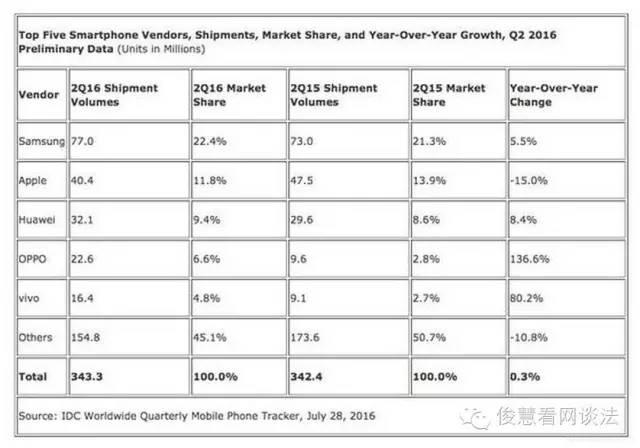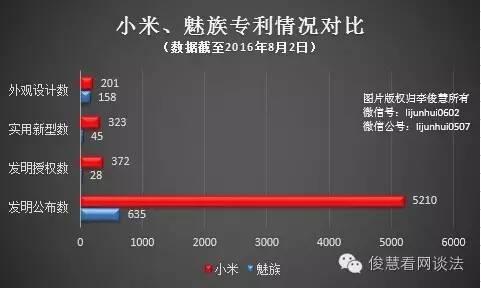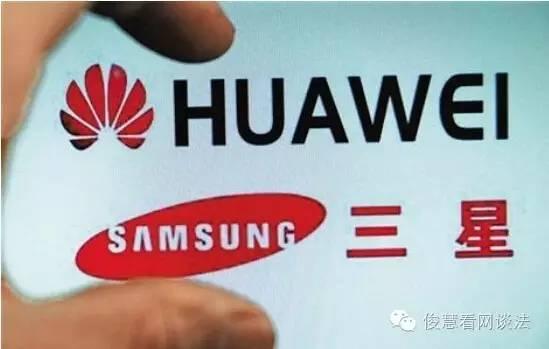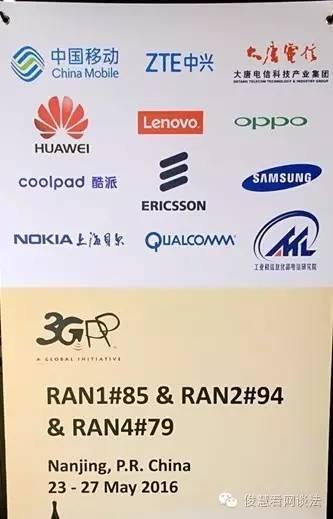In the novel “Swordsmanâ€, Huashan School’s “Zongzong†and “Qizong†are two branches. The former pays more attention to “cultivation†and the latter emphasizes “movementâ€.
The distinction between "Zongzong" and "Qizong" is similar to that of the "marketing school" and "technology stream" of the current smartphone market.
“Marketing†smart phone players, such as Xiaomi, Meizu, etc., achieved short-term sales and rapid brand growth through their marketing, while “technology streaming†smartphone players, such as Huawei and OPPO, appeared to be leading the “marketing pie†in the first half. However, after more than half of the season, the stamina was strong and achieved a full-scale oversight of the "marketing faction."

Recently, according to media reports, Qualcomm and OPPO announced that they have reached new 3G and 4G Chinese patent licensing agreements.
Pursuant to the terms of the agreement, Qualcomm has granted OPPO a paid patent license to develop, manufacture and sell 3G (WCDMA and CDMA2000) and 4G LTE (including "three-mode" GSM, TD-SCDMA and LTE-TDD) terminals.
This is the first domestic mobile phone manufacturer to re-enter a patent license agreement with Qualcomm after the Qualcomm initiated a patent litigation against Meizu.
Some people think that OPPO was forced to sign a contract with Qualcomm to sue Meizu and some people believe that OPPO has already focused its market competition overseas.
So, what does it mean for OPPO and Qualcomm to reach a patent license agreement? Where will the domestic smart phone market follow?
Marketing school: sales are fleeting, but long-distance running competition is limited

According to data released by IDC, as of July 28, 2016, Samsung, Apple, Huawei, OPPO, and vivo ranked at the top 5 in the smartphone market with 22.4%, 11.8%, 9.4%, 6.6%, and 4.8%, respectively.
The smart phone manufacturers, including Xiaomi and Meizu, which are known for their "marketing", are no longer on the list.
The data shows that in 2014, Meizu smartphone shipments were only 4.4 million units. In February 2015, Meizu announced the acquisition of Alibaba’s strategic investment of US$590 million, and launched the “sea-based tactics†to deploy high-end, low-end and high-speed sales.
On April 6, 2016, Bai Yongxiang, CEO of Meizu, once said that the sales volume of Charm Blue products has reached 20 million.
At the same time, Xiaomi’s mobile phone is also experiencing a bottleneck after experiencing several consecutive years of high growth.
In 2015, Xiaomi’s handset shipments exceeded 70 million units. However, this figure is still quite different from the 80 million to 100 million targets set by Xiaomi.
In 2016, the growth of Xiaomi and Meizu became weak one after another. Xiaomi claimed that he wanted to start an internal second venture, while Meizu was deeply immersed in the patent dispute.
Fatal injury: "patent short board" becomes the biggest bottleneck in marketing

On June 23, Meizu was sued by Qualcomm to the Beijing Intellectual Property Court for a claim for 520 million yuan due to a long-term default of Qualcomm’s royalties.
A week later, on June 30th, Qualcomm once again sued Meizu to the Beijing Intellectual Property Court and the Shanghai Intellectual Property Court, alleging that Meizu infringed Qualcomm’s multiple patents covering multiple functions and technologies of smartphones, including 3G. Patents related to (WCDMA and CDMA2000) and 4G (LTE) wireless communication standards. The two companies filed 9 and 8 patent infringement lawsuits respectively, claiming a total of 17 million yuan.
In fact, Meizu’s patent shortcomings have not been effectively “filled inâ€.
Statistics from the website of the State Intellectual Property Office show that as of August 2, 2016, Meizu submitted a total of 635 patent applications, 28 patents for inventions, 45 utility models, and 158 designs. .
On the other hand, Xiaomi has been deeply immersed in the patent dispute two years ago.
On December 11, 2014, Xiaomi was accused by Ericsson in India of the High Court of Delhi, India for allegedly infringing 8 patents such as ARM, EDGE, 3G and other related technologies owned by Ericsson.
Subsequently, Xiaomi continued to increase its own research and development and patent mergers and acquisitions.
Statistics from the website of the State Intellectual Property Office show that as of August 2, 2016, Xiaomi submitted a total of 5,210 patent applications, 372 invention authorizations, 323 utility model numbers, and 201 exterior design applications. .
By comparison, it can be seen that the number of inventions announced by Xiaomi is 8.2 times that of Meizu, that of inventions is 13.3 times that of Meizu, that of utility models is 7.2 times that of Meizu, and that of designs is 1.3 times that of Meizu.
At the same time, the acquisition of patents has also become an important means for the company to strengthen its patented arsenal.
On October 23, 2015, Xiaomi acquired 31 wireless communication patents from Broadcom. On February 4, 2016, Xiaomi purchased 332 U.S. patents from U.S. chip giant Intel. On June 1, 2016, Xiaomi purchased 1,500 patents from Microsoft again.
Licensing: OPPO and Qualcomm reach new agreement is a matter of course

Some people think that OPPO's new patent license agreement with Qualcomm may be affected by Meizu’s case of being sued by Qualcomm.
In fact, Meizu and OPPO are inconsistent when they negotiate patent license with Qualcomm.
First of all, OPPO’s patent holdings are significantly ahead of Meizu.
According to statistics from the website of the State Intellectual Property Office, as of August 2, 2016, Guangdong Opal Mobile Communications Co., Ltd. submitted a patent application with 7,213 invention announcements, 780 invention authorizations, and 868 utility model numbers. , The number of designs is 206 pieces.
By comparison, it can be seen that the number of inventions published by OPPO is 1.4 times that of Xiaomi, the number of inventions authorized is 2.1 times that of Xiaomi, the number of utility models is 2.7 times that of Xiaomi, and only the number of designs is comparable to that of Xiaomi.
Second, OPPO’s technological R&D strength is ahead of Meizu.
For example, OPPO is widely used in advertising and advertising techniques such as “charging five minutes, calling two hours†fast charging technology and photographing technology.
For another example, at the 2016 World Mobile Communications Conference (MWC 2016), OPPO demonstrated its latest R&D achievements OPPOVOOC Super Flash Charge and SmartSensor Image Chip Image Stabilization Technology. The former can achieve “15 minutes full of a mobile phoneâ€, which can be significantly Improve the anti-shake precision effect.
Finally, OPPO has a long-term relationship with Qualcomm.
In terms of patent licensing, OPPO has been cooperating with Qualcomm's patent license before Qualcomm was punished by the National Development and Reform Commission. After Qualcomm was punished, OPPO and Qualcomm began a new round of patent licensing negotiations.
In terms of technical cooperation, OPPO and Qualcomm have been cooperating in the development of new technologies.
Therefore, although OPPO and Qualcomm reached a new agreement after Meizu was indicted, this is more of a coincidence.
After all, during the negotiation process, OPPO’s mobile phone sales and patent accumulation have been in a period of rapid increase, making the negotiation conditions of the two parties constantly changing.
Technology flow: Although the starting is not dominant, but the accumulative momentum is sufficient

In fact, with the signing of the patent licensing agreement between OPPO and Qualcomm, the disputes between the two major factions, the “marketing faction†and the “technical flow†of the domestic smartphone market, may have reached a conclusion.
Marketers represented by Xiaomi and Meizu are increasingly losing momentum, and the technology flow represented by Huawei and OPPO is gradually becoming the main force of the market.
Among them, millet started with marketing is filling the patent shortboard, trying to move closer to the technology stream, and Meizu can some manufacturers still seem to be immersed in the "marketing" can not extricate themselves.
Huawei's own accumulation in the field of communications technology, after making up for marketing shortcomings, shows a stronger stamina in the smartphone market.
On the one hand, its market share in smart phones continues to expand. On the other hand, it also initiates patent litigation against Samsung and other competitors in China and the United States.
The OPPO is also increasing its investment in technology research and development, patent layout and standard setting. For example, in terms of patent purchases, OPPO has acquired a certain amount of standard-essential patents in China, Japan and South Korea, the United States, and Europe to serve as defenses.
In terms of technology research and development and standard setting, there are also OPPO's in technology smartphone players, such as Qualcomm, Huawei, OPPO, ZTE, and Samsung, who are involved in 5G technology research and development and standards development.
Battle overseas: Significant difference in market performance between marketing schools and technology streams

As we all know, Huawei has entered many countries and regions with its previous accumulation in the communications market. According to media reports, Huawei has entered 170 countries in the world with a total of 35,000 retail stores.
The OPPO has also continued to increase its overseas deployment efforts. According to reports, OPPO has completed its layout in 19 countries or regions including India, Vietnam, and Thailand. Among them, OPPO has the best development in Vietnam, second only to Samsung. , ranking second in the local area.
On the surface, OPPO and Huawei have significant overseas strategic gaps, but this may also be the reason for OPPO's own development strategy.
On the one hand, OPPO is a manufacturer focused on smart phones, and its share in the domestic market is still on the rise. On the other hand, overseas deployment itself will also involve a lot of energy, OPPO's overseas layout may choose to take the "fine line."
On the other hand, Xiaomi and Meizu have tested water in only a few countries, including India. Among them, Xiaomi also encountered Ericsson’s patent encumbrance in India, and the growth momentum was inhibited.
Prior to the commercial launch of 5G, the domestic smart phone market has become increasingly saturated, and the sea enclosure has become a common problem faced by most domestic mobile phone manufacturers.
While participating in the competition in the sea, product and marketing are important, but if there is not enough powerful "firewall" patents, it is very easy for the communications giant to "press."
Whether Huawei, Xiaomi or OPPO are increasing patent purchases in certain regions or markets, on the one hand, this helps prevent patent encumbrances from competitors, and on the other hand, it also helps clear up overseas markets for their products. obstacle.
In fact, when technology flows are all striving to transform themselves through technology, they will increase their voice in the next generation of communications technology and will lay the foundation for the competition in the 5G terminal market.
It seems that the marketing-smart-phone players are still speeding up inventory clearing through the continuous “variety†conference.
This difference in play style is doomed to the fact that the marketing school and technology flow have already "participated in the future."
This article from the Tencent News client from the media, does not represent the views and positions of Tencent News
DADNCELL 1.5V AAA alkaline batteries are more suitable for long-lasting continuous discharge and high-performance power consumption equipment because of their unique internal component structure, coupled with better battery materials, improved power capacity and electrical performance, and the same model of DADNCELL 1.5V AAA alkaline cell capacity and discharge time, Alkaline battery capacity and discharge time are 4-7 times that of ordinary batteries, and the gap in power discharge performance at high and low temperature is even wider.
At present, all types of cells developed by DADNCELL Labs do not involve any heavy metals in production, are green and can be disposed of with domestic waste.
DADNCELL 1.5V AAA battery advocates a more comfortable and smooth power supply experience for household appliances. Alkaline zinc-manganese dry battery series is suitable for various common household electronic equipment instruments such as smart door locks, infrared thermometers, cameras, flash lights, razors, electric toys, instruments, high-power remote controls, Bluetooth wireless mouse keyboards, etc.
1.5V Lr14(C) Alkaline Cell,1.5V Lr14 Alkaline Cell Suitable For Toys,C Batteries For Camera Instruments And Meters,Lr14 For Temperature Gun
Shandong Huachuang Times Optoelectronics Technology Co., Ltd. , https://www.dadncell.com